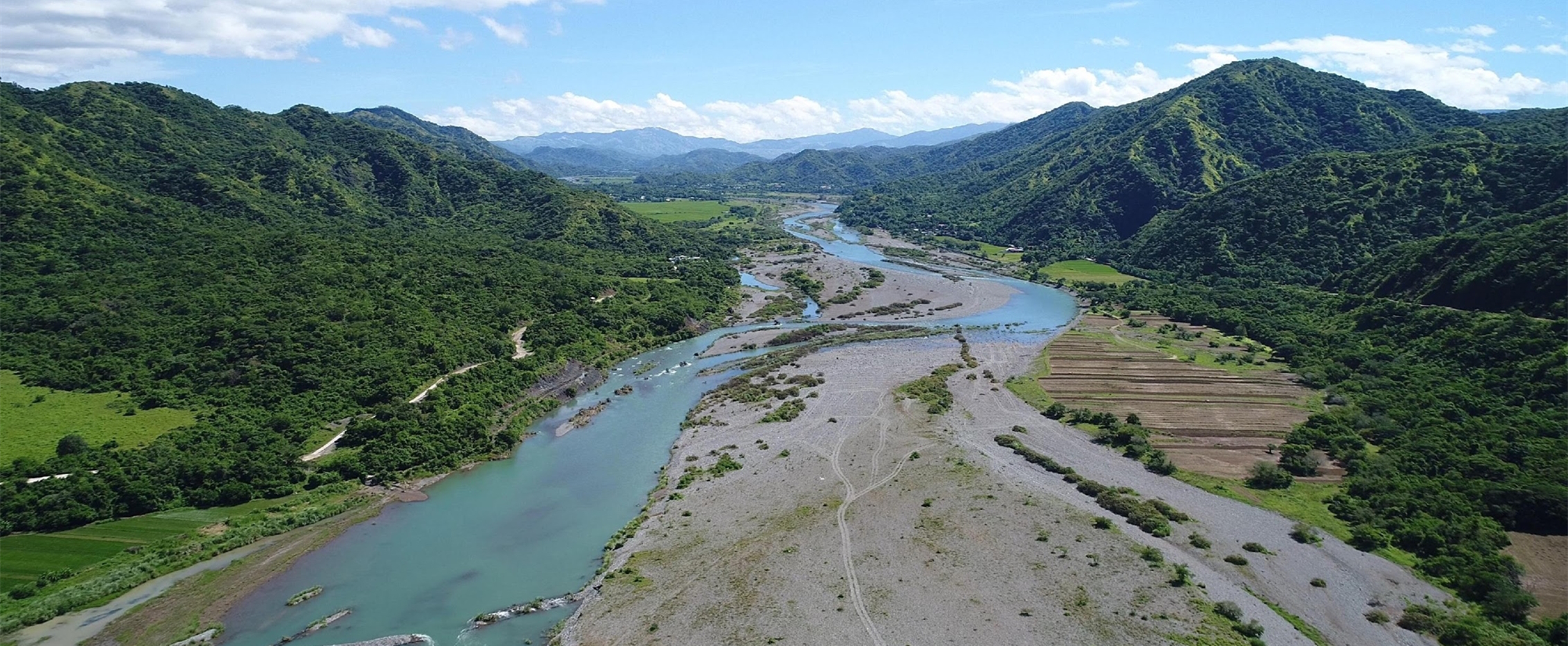Research
Recent contributions to research projects include (i) quantifying geomorphic hazards in the Philippines; (ii) improving global flood models and (iii) monitoring riparian vegetation dynamics in European rivers.

(i) Sediment flux and geomorphic change as drivers of flood risk in the Philippines
River morphology results from sediment transport and sedimentation, which are both a consequence of water flow. Episodic variation in natural (e.g. typhoons, earthquakes, volcanoes) and anthropogenic (e.g. gravel mining, river bank protection) sediment supply drives changes in riverbed levels. These changes determine channel capacity and flow routing, and thus associated flood risk to people and property. The same factors determine variations in lateral bank erosion rates; elevated rates result in the loss of developed floodplain and the failure of critical infrastructure such as road bridges. Despite the significance of variation in riverbed levels and channel position for flood risk, geomorphological processes are commonly overlooked in flood risk mapping. In the Philippines, rivers are particularly dynamic; risks arising from sedimentation and erosion need to be assessed and incorporated into flood risk management to mitigate the impact of flooding on welfare and the economy.

(ii) EVOFLOOD - the evolution of global flood hazard and risk
Flooding is the deadliest and most costly natural hazard on the planet, affecting societies across the globe. Nearly one billion people are exposed to the risk of flooding in their lifetimes and around 300 million are impacted by floods in any given year. The impacts on individuals and societies are extreme: each year there are over 6,000 fatalities and economic losses exceed US$60 billion. These problems will become much worse in the future. There is now clear consensus that climate change will, in many parts of the globe, cause substantial increases in the frequency of occurrence of extreme rainfall events, which in turn will generate increases in peak flood flows and therefore flood vast areas of land. Meanwhile, societal exposure to this hazard is compounded still further as a result of population growth and encroachment of people and key infrastructure onto floodplains. Faced with this pressing challenge, reliable tools are required to predict how flood hazard and exposure will change in the future. More information about the project can be found here: https://www.evoflood.co.uk/

(iii) Biogeomorphic response of Po River tributaries to an extreme flood-drought sequence
In 2020, an exceptional rainfall event caused widespread flooding in north-western Italy. Two years later, the Po River basin experienced the worst hydrological drought in the last two centuries. Ongoing research is appraising the biogeomorphic response of Po River tributaries to this extreme flood-drought sequence, focusing on planimetric changes in channel morphology and riparian vegetation coverage. It is hypothesised that the reach-scale response will vary depending on river channel pattern type (meandering, wandering, braided).